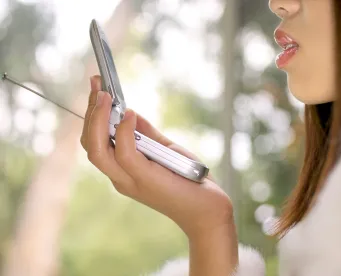The TCPA prohibits “making” a call or text with an ATDS without consent. There is little if any case law interpreting what “making” a call really means, or determining whether a Plaintiff must show they actually received a call or text on their cell phone in order to establish a TCPA violation. There could be any number of reasons why a call or text that is initiated on the caller’s end doesn’t end up reaching a phone—there may be network issues, the phone might be off, disabled, or out of reception, or perhaps the call or text was caught in a call blocking filter. It’s a “if a tree falls in the forest, and there’s nobody around to hear, does it make a sound,” type question. And it seems to make little sense to impose steep statutory penalties for trying to “make” a call or text that the intended recipient had no idea about. No harm, no foul, right?
At least one court has now held that a Plaintiff could not establish liability under the TCPA without showing that he actually received the text message at issue on his phone. And to make things interesting, the cell phone at issue was a decade-old RAZR flip phone: the coolest 2000’s flip phone of them all.
In Stone v. AT&T Servs., No. 3:18-cv-02028-GPC-MSB, 2020 U.S. Dist. LEXIS 6073 (S.D. Cal. Jan. 13, 2020), the Defendant had created and attempted to send a MMS message to the Plaintiff’s cellular telephone number. The Defendant did not receive any sort of error message, but the message was never received on the Plaintiff’s phone (maybe because it was a decade old).
In deciding whether to grant judgment in Defendant’s favor, the court examined whether a call was “made” to Plaintiff’s phone. The evidence showed that the MMS message in question was processed, but never received by Plaintiff. Based upon this record, the court concluded “that Plaintiff has failed to show that he received the March 2, 2017 MMS message and therefore cannot establish TCPA liability for this message.”
The Court’s ruling indicates that it was expecting the Plaintiff to have some proof of receipt to establish liability under the TCPA. Often times, this sort of evidence is lacking, and disputes over the number of calls for which a Defendant may be liable are commonplace. But the Stone case is a helpful authority that may be used to persuade courts that a Plaintiff also bears the burden of showing the receipt—not just the mere initiation—of a text message or call.
In Stone there was also a dispute over whether Defendant had sent another 111 SMS messages after the date of the MMS message in question. While Defendant denied sending those messages, Plaintiff had presented screenshots that showed several messages that originated from a short code associated with the Defendant. The Court found that these screenshots were “unrebutted proof that the SMS messages were ‘received’ by Plaintiff’s RAZR phone.” And the short code association “provide[d] a measure of circumstantial proof that the messages were ‘initiated’ by [Defendant].” The court found that this evidence, though circumstantial, was just enough to establish a triable factual dispute to be decided by the jury.
While this aspect of the Court’s ruling was not exactly positive, it does draw a helpful distinction between a message that is merely “initiated” and one that is “received”. The court’s reasoning reflects its viewpoint that “initiating” a call is not the equivalent of “making” a call, and that some proof of receipt must exist for a Plaintiff to establish liability under the TCPA.



 />i
/>i

